本文主要是介绍基于Opencv的答题卡识别(附详解代码),希望对大家解决编程问题提供一定的参考价值,需要的开发者们随着小编来一起学习吧!
基于Opencv图像识别的答题卡识别项目
在观看唐宇迪老师图像处理的课程中,其中有一个答题卡识别的小项目,在此结合自己理解做一个简单的总结。
1. 项目分析
首先在拿到项目时候,分析项目目的是什么,要达到什么样的目标,有哪些需要注意的事项,同时构思实验的大体流程。
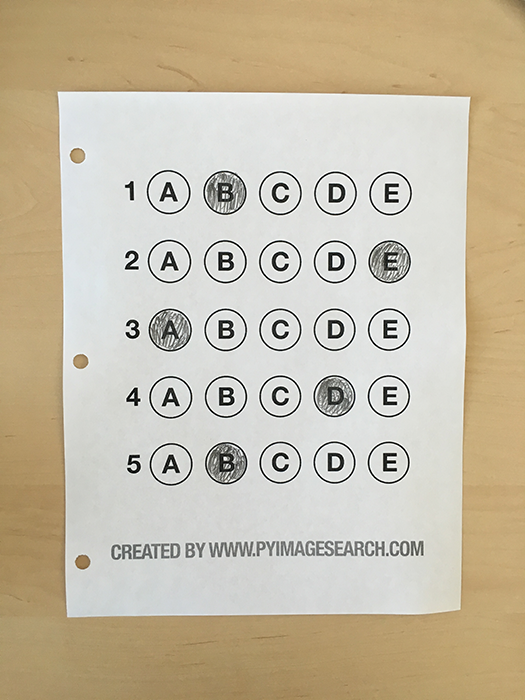
比如在答题卡识别的项目中,针对测试图片如图1 ,首先应当实现的功能是:
- 能够捕获答题卡中的每个填涂选项。
- 将获取的填涂选项与正确选项做对比计算其答题正确率。
2.项目实验
在对测试图像进行形态学操作中,首先转换为灰度图像,其次是进行减噪的高斯滤波操作。
gray = cv2.cvtColor(image, cv2.COLOR_BGR2GRAY)
blurred = cv2.GaussianBlur(gray, (5, 5), 0)
cv_show('blurred',blurred)
在得到高斯滤波结果后,对其进行边缘检测以及轮廓检测,用以提取答题卡所有内容的边界。
edged = cv2.Canny(blurred, 75, 200)
cv_show('edged',edged)# 轮廓检测
cnts, hierarchy = cv2.findContours(edged.copy(), cv2.RETR_EXTERNAL,cv2.CHAIN_APPROX_SIMPLE)
cv2.drawContours(contours_img,cnts,-1,(0,0,255),3)
cv_show('contours_img',contours_img)
docCnt = None
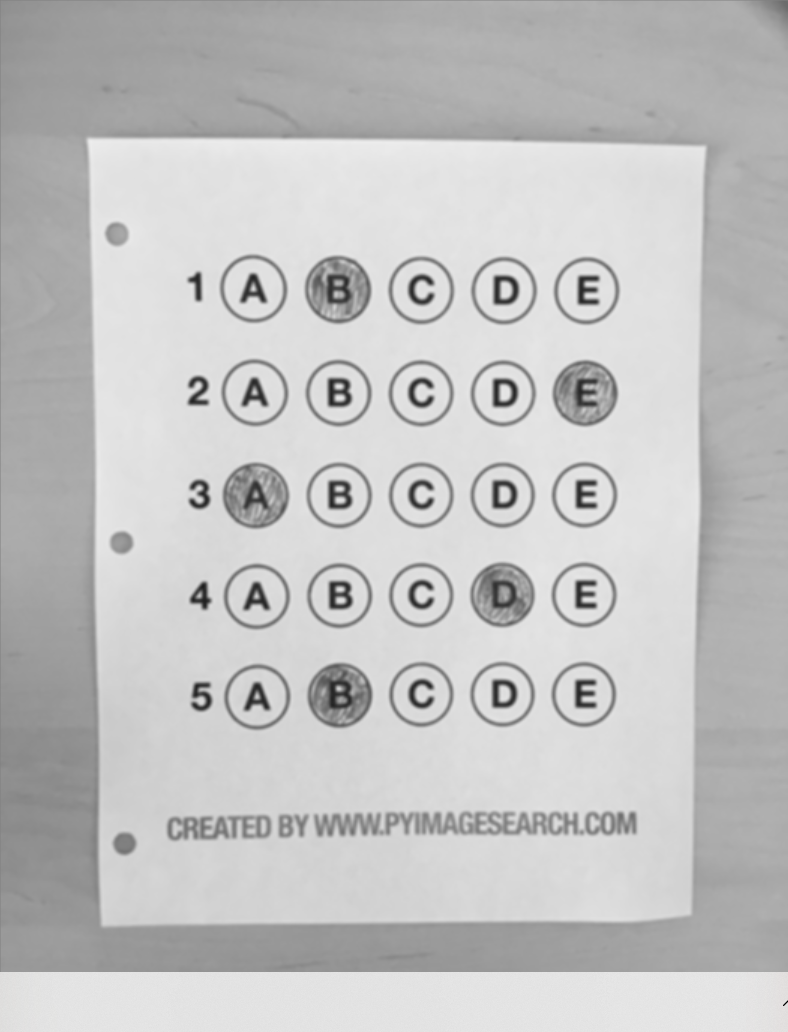 图2. 高斯滤波图 图2. 高斯滤波图 | 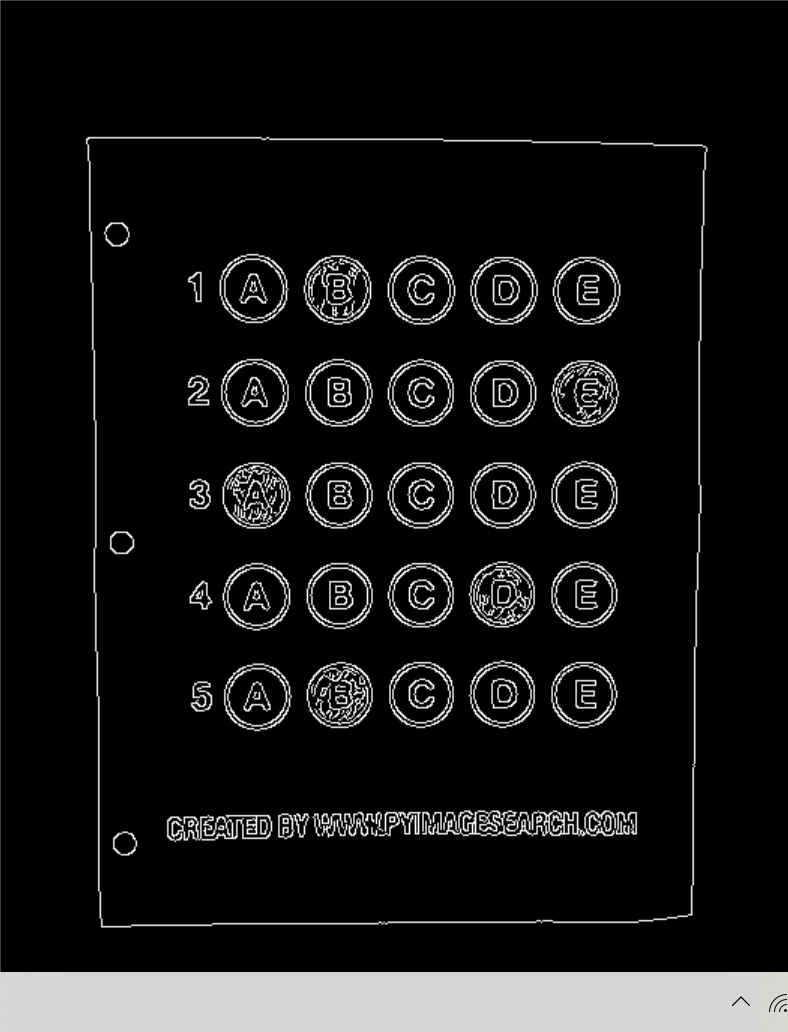 图3. 边缘检测图 图3. 边缘检测图 |
# 轮廓检测
cnts, hierarchy = cv2.findContours(edged.copy(), cv2.RETR_EXTERNAL,cv2.CHAIN_APPROX_SIMPLE)
cv2.drawContours(contours_img,cnts,-1,(0,0,255),3)
cv_show('contours_img',contours_img)
def four_point_transform(image, pts):# 获取输入坐标点rect = order_points(pts)(tl, tr, br, bl) = rect# 计算输入的w和h值widthA = np.sqrt(((br[0] - bl[0]) ** 2) + ((br[1] - bl[1]) ** 2))widthB = np.sqrt(((tr[0] - tl[0]) ** 2) + ((tr[1] - tl[1]) ** 2))maxWidth = max(int(widthA), int(widthB))heightA = np.sqrt(((tr[0] - br[0]) ** 2) + ((tr[1] - br[1]) ** 2))heightB = np.sqrt(((tl[0] - bl[0]) ** 2) + ((tl[1] - bl[1]) ** 2))maxHeight = max(int(heightA), int(heightB))# 变换后对应坐标位置dst = np.array([[0, 0],[maxWidth - 1, 0],[maxWidth - 1, maxHeight - 1],[0, maxHeight - 1]], dtype = "float32")# 计算变换矩阵M = cv2.getPerspectiveTransform(rect, dst)warped = cv2.warpPerspective(image, M, (maxWidth, maxHeight))# 返回变换后结果return warped
# 执行透视变换warped = four_point_transform(gray, docCnt.reshape(4, 2))
cv_show('warped',warped)
在透视变换之后,需要再进行二值转换,为了找到ROI圆圈轮廓,采用二次轮廓检测执行遍历循环以及 if 判断找到所有符合筛选条件的圆圈轮廓。此处不使用霍夫变换的原因是在填涂答题卡的过程中,难免会有填涂超过圆圈区域的情况,使用霍夫变换的直线检测方式会影响实验结果的准确性。
# 找到每一个圆圈轮廓
cnts, hierarchy = cv2.findContours(thresh.copy(), cv2.RETR_EXTERNAL,cv2.CHAIN_APPROX_SIMPLE)
cv2.drawContours(thresh_Contours,cnts,-1,(0,0,255),3)
cv_show('thresh_Contours',thresh_Contours)
questionCnts = []
# 遍历
for c in cnts:# 计算比例和大小(x, y, w, h) = cv2.boundingRect(c)ar = w / float(h)# 根据实际情况指定标准if w >= 20 and h >= 20 and ar >= 0.9 and ar <= 1.1:questionCnts.append(c)# 按照从上到下进行排序
questionCnts = sort_contours(questionCnts,method="top-to-bottom")[0]
correct = 0
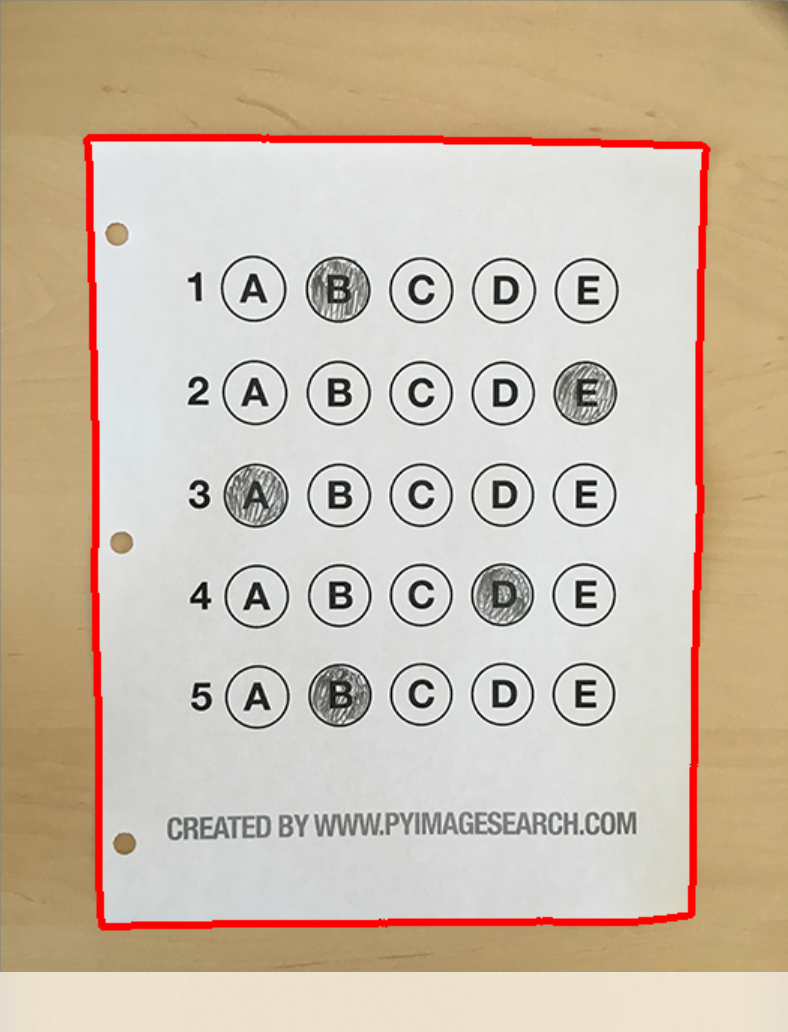 图4. 轮廓检测图 图4. 轮廓检测图 | 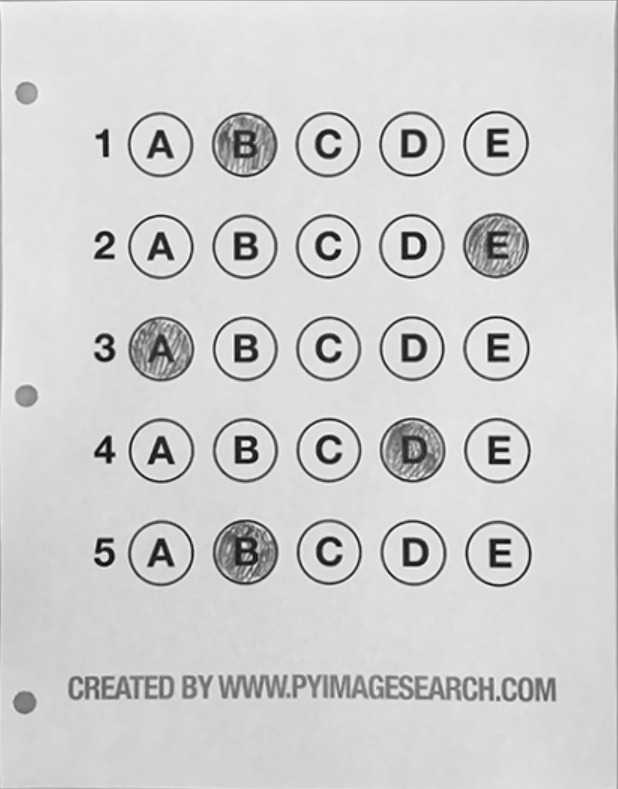 图5. 透视变换图 图5. 透视变换图 | 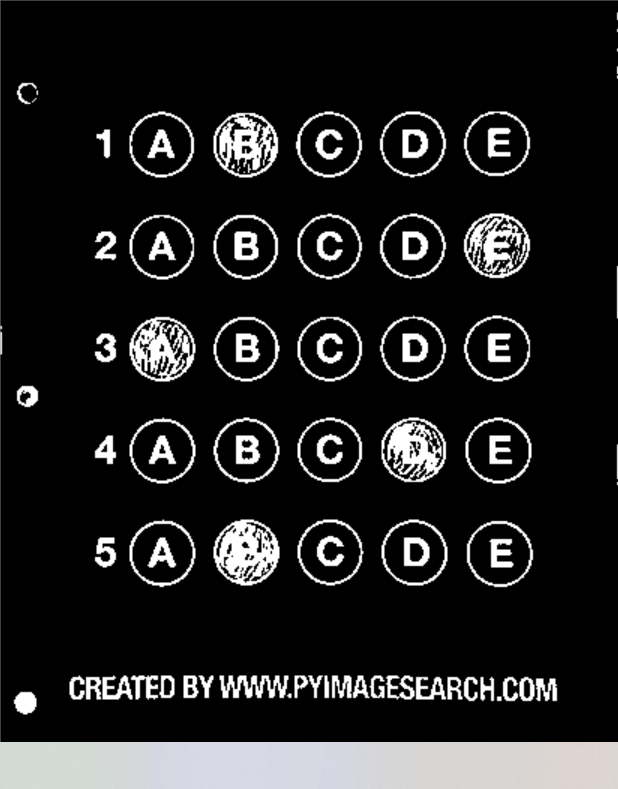 图6. 二值转换图 图6. 二值转换图 | 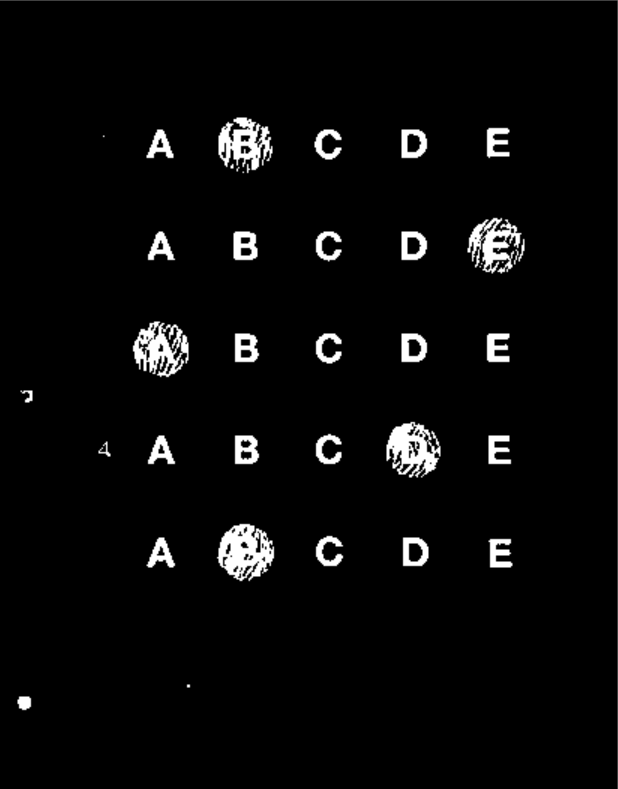 图7. 轮廓筛选图 图7. 轮廓筛选图 |
在得到每个圆圈轮廓后,需要将其进行排序,排序方式为从左到右,从上到下,以图7为例,答题卡分布为五行五列,在每一列中,每行A选项的横坐标x值是相近的,而在每一行中,A、B、C、D、E的纵坐标y是相近的,因此利用这一特性来对所得到的圆圈轮廓进行排序,代码如下:
def sort_contours(cnts, method="left-to-right"):reverse = Falsei = 0if method == "right-to-left" or method == "bottom-to-top":reverse = Trueif method == "top-to-bottom" or method == "bottom-to-top":i = 1boundingBoxes = [cv2.boundingRect(c) for c in cnts](cnts, boundingBoxes) = zip(*sorted(zip(cnts, boundingBoxes),key=lambda b: b[1][i], reverse=reverse))return cnts, boundingBoxes
在得到每一个具体轮廓后,便是判断每道题所填涂的答案是否为正确答案,使用的方法为通过双层循环遍历每一个具体圆圈轮廓,通过mask图像计算非零点数量来判断答案是否正确。
# 每排有5个选项
for (q, i) in enumerate(np.arange(0, len(questionCnts), 5)):# 排序cnts = sort_contours(questionCnts[i:i + 5])[0] #从左到右排列,保持顺序:A B C D Ebubbled = None# 遍历每一个结果for (j, c) in enumerate(cnts):# 使用mask来判断结果mask = np.zeros(thresh.shape, dtype="uint8")cv2.drawContours(mask, [c], -1, 255, -1) #-1表示填充cv_show('mask',mask)# 通过计算非零点数量来算是否选择这个答案mask = cv2.bitwise_and(thresh, thresh, mask=mask)total = cv2.countNonZero(mask)# 通过阈值判断if bubbled is None or total > bubbled[0]:bubbled = (total, j)# 对比正确答案color = (0, 0, 255)k = ANSWER_KEY[q]# 判断正确if k == bubbled[1]:color = (0, 255, 0)correct += 1# 绘图cv2.drawContours(warped, [cnts[k]], -1, color, 3)
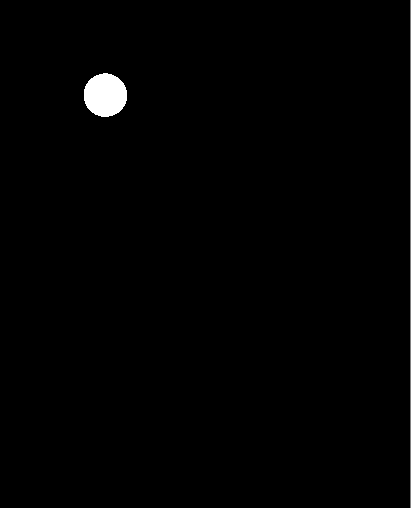
3.项目结果
在实验完成后,输出实验结果
score = (correct / 5.0) * 100
print("[INFO] score: {:.2f}%".format(score))
cv2.putText(warped, "{:.2f}%".format(score), (10, 30),cv2.FONT_HERSHEY_SIMPLEX, 0.9, (0, 0, 255), 2)
cv2.imshow("Exam", warped)
cv2.waitKey(0)
Connected to pydev debugger (build 201.6668.115)
[INFO] score: 100.00%Process finished with exit code 0
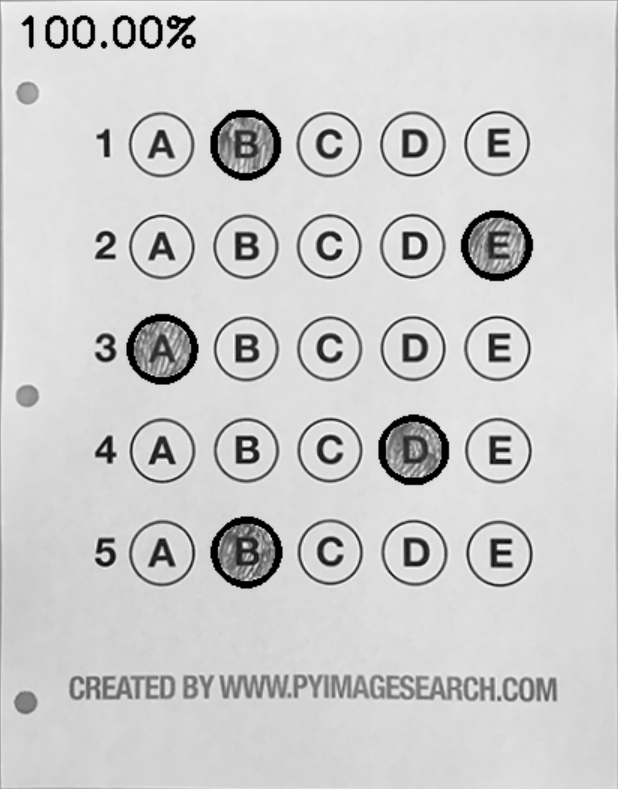
总结
在处理答题卡识别小项目中,个人觉得重点有以下几个方面:
- 图像的形态学操作,处理的每一步都应该预先思考,选择最合适的处理方式,如:未采用霍夫变换而使用了二次轮廓检测。
- 利用mask图像对比答案正确与否,通过判断非零像素值的数量来进行抉择。
- 巧妙利用双层 for 循环以及 if 语句遍历所有圆圈轮廓,排序之后进行答案比对。
这篇关于基于Opencv的答题卡识别(附详解代码)的文章就介绍到这儿,希望我们推荐的文章对编程师们有所帮助!




